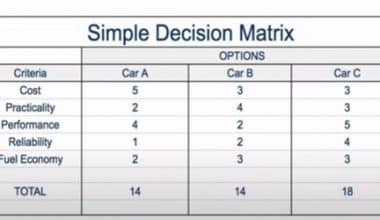Show me an organization where there is no conflict and I’ll show you one that does not exist. In essence, conflict in an organization is inevitable. This is because every organization is made up of different people with different norms and beliefs from different works of life. There is no avoiding conflict, but surely, it can be managed, hence the practice of “conflict management”. In managing conflict, there are management styles and strategies every manager and employer should adopt to successfully ensure healthy working conditions amongst the employees.
In this article, we will be discussing the styles and strategies for effective conflict management, but let us understand first what conflict is all about.
Understanding Conflict
To put it simply, conflict is a disagreement between two or more people that stems from fundamentally different interests, needs, or even worldviews itself. Conflict can be something as little as a mere disagreement between a customer and the sales assistant at the shopping mall over the price or quality of a particular item. It could also be something as serious as the type that causes war between two countries.
Conflicts can also occur in the workplace; it could be among the employees, or between employees and the employer. While conflict between employees is normal or expected to an extent, it, however, poses a great threat when it is between employees and the employer. This is the point where motivation drops as well as the organization’s productivity. It is also the point where no employer in their right mind wishes to get to ever.
As mentioned earlier, conflict is inevitable in the workplace. Since conflict is a natural part of the workplace, it is important therefore that there are people who understand conflicts and know how to manage them when it arises.
What Is Conflict Management?
Conflict management is the art of identifying and handling conflicts in a more rational, fair, and efficient manner. It refers to practices and ideas aimed at lessening the negative consequences of conflict and increasing the good outcomes for all parties concerned.
Employers must have a better understanding of the factors that contribute to conflict and gain the ability to take preventative measures at the appropriate moment through the application of conflict management. In other words, they must equip themselves with different conflict management styles and strategies. What are these strategies for managing conflict in the workplace? Let’s see.
Conflict Management Strategies and Styles
In managing conflict, the following management styles should be applied:
#1. Accommodating approach:
The basic principle of the accommodating approach to conflict management is to prioritize the needs of the other party over one’s own. You did not prevent them from doing what they desired. You can use this strategy to manage disagreements when you don’t care as much about the outcome as the other person does, when you don’t believe it’s worth your time to prolong the conflict, or when you believe you are in the wrong.
It is about knowing when to pick your battles when to keep the peace, and not putting in more effort than is really necessary. It is possible that, while appearing to be a weak alternative, accommodation is the best way to resolve a minor disagreement and move on to more serious matters
#2. Compromise approach
This approach to conflict resolution requires both sides to concede certain aspects of what they want in order to reach an agreement. The purpose of this management strategy is to find a happy medium. This method is frequently referred to as a “lose-lose” technique because, in order to reach an agreement on the more fundamental issue, both parties must give up a few items that are important to them.
This is used when there is a time limitation or when a solution simply needs to happen rather than being perfect. When attempting to solve a problem, excessive use of compromise as a method may result in feelings of resentment; therefore, this strategy should be used judiciously.
#3. Collaboration approach
This necessitates a gathering of all parties involved to discuss the issue at hand and negotiate a resolution to the disagreement as a group. When it is critical to maintain the relationships of all parties involved, or when the solution itself will have a significant impact, the technique of collaborating to manage conflict is used.
Despite the fact that it is typically the most difficult and time-consuming to implement, this style of conflict management produces the best long-term results. After considering the needs and desires of both parties, a solution that is advantageous to both parties and satisfying to both parties is discovered.
#4. Avoidance approach
This conflict management strategy seeks to reduce conflict by ignoring it, removing the fighters, or evading it in some way. It is essential to eliminate team members who disagree with the project’s direction, extend deadlines, or transfer staff to new departments.
This method can be useful for settling a problem if it would be beneficial to take a break from the conflict or if you need more time to consider your perspective on the conflict itself. Avoidance, however, should not be used in place of appropriate conflict resolution. Indefinitely postponing conflict resolution can and will lead to more difficulties (and larger conflicts) in the future. Avoidance should never be employed in critical cases.
What Are Some Examples of Conflict In The Workplace?
The following examples are the types of conflicts that are likely to occur in the workplace, and how to manage them
#1. Poor communication.
One of the most common types of disagreements that can arise in the workplace is due to poor communication. Whether it’s a list of instructions that wasn’t communicated properly or a comment that was taken the wrong way, a communication conflict can quickly result in tension, reduced productivity, and of course, errors.
The worst decision a leader could make is to ignore a communication mistake and let it go uncorrected. You need to take a good, hard look at the situation when something goes wrong so that you can figure out what went wrong, why it went wrong, and how you can prevent it from happening again in the future.
Read Also WHY IS COMMUNICATION IMPORTANT IN THE WORKPLACE
#2. Workstyles and Personalities Clashing
As a leader, you may also be required to act as a mediator between employees who have differing personalities, preferences that are in conflict with one another, or work styles that are in competition with one another. Disagreements are practically unavoidable when people hold differing points of view; yet, this does not indicate that these conflicts are impossible to resolve.
When it comes to dealing with differences in the workplace, it is your responsibility as a leader to both support diversity and provides ways for members of the team to successfully corroborate one another’s statements. Being self-aware and mindful of the individuals you collaborate with is one of the most effective strategies for accomplishing this goal.
#3. Discrimination or Sexual Harassment
Discrimination claims in the workplace involving race, age, gender, belief, and others should be dealt with the highest care and severity.
First of all, taking it seriously indicates you prioritize these issues. It sends a message to potential victims.
Secondly, making it a culture in which prejudice is not accepted can help everyone feel more comfortable, allowing them to be more productive. Additionally, effectively resolving discrimination and harassment accusations will help you decrease the possibility of legal action surrounding such claims.
Read Also: WORKPLACE HARASSMENT: Types, Examples and What You Should Know
What Is The Most Important Key To Resolving Conflict?
Communication
The parties involved should come together in dialogue and talk things through. Eventually, they will come to an understanding and see reason with one another. In the event of communication, certain things are revealed, one person yields to the other and the collaboration begins.
What Are Types Of Conflict?
Conflicts occur in different ways:
- Man against fellow man
- Man against self
- Man against nature
- Man against society
How Do You Resolve Conflict In a Team?
A team is a sub-section or a group of individuals that makes up a whole organization or department. Since it is made of people, conflict is sure. However, to resolve it when it occurs, communication is key. The team lead must allow every team member to air their view on a particular matter and respect their opinion.
Another way to resolve conflict in a team is to clearly define the goals and objectives and carry every member along
How Can You Turn Conflict into a Positive Experience?
Do your best to gain insight into the situation. Consider things like, what steps can you take to prevent the dispute from occurring. Have you played a role in the escalation of the conflict in any way? How? Why did you do so? And, maybe most significantly, what you might do differently that might end the conflict or prevent the conflict from progressing further.
What Are The Best Practices for Conflict Management in the Workplace?
The following are the best-known practices for managing conflicts arising in the workplace
- Take a rational and well-calculated approach
- Suggest options and agree on a way forward
- Let everyone say their mind
- Implement what has been agreed
- Come up with preventive strategies for the future
In Conclusion, conflict in the workplace isn’t entirely a bad thing. Since conflicts in the workplace are unavoidable, perhaps, we should start to see the positive side of it. When conflict is resolved properly, engaging the above management strategies, a whole new and healthy working environment where people work with much enthusiasm. Hence the saying ‘there’s no peace without a war’
Related Posts
- CONFLICT RESOLUTION: Strategic Process to Take and Training
- BEST ONLINE MANAGEMENT COURSES: Best Online Courses
- The Top Effective 2023 Strategies for Resolving Conflict






